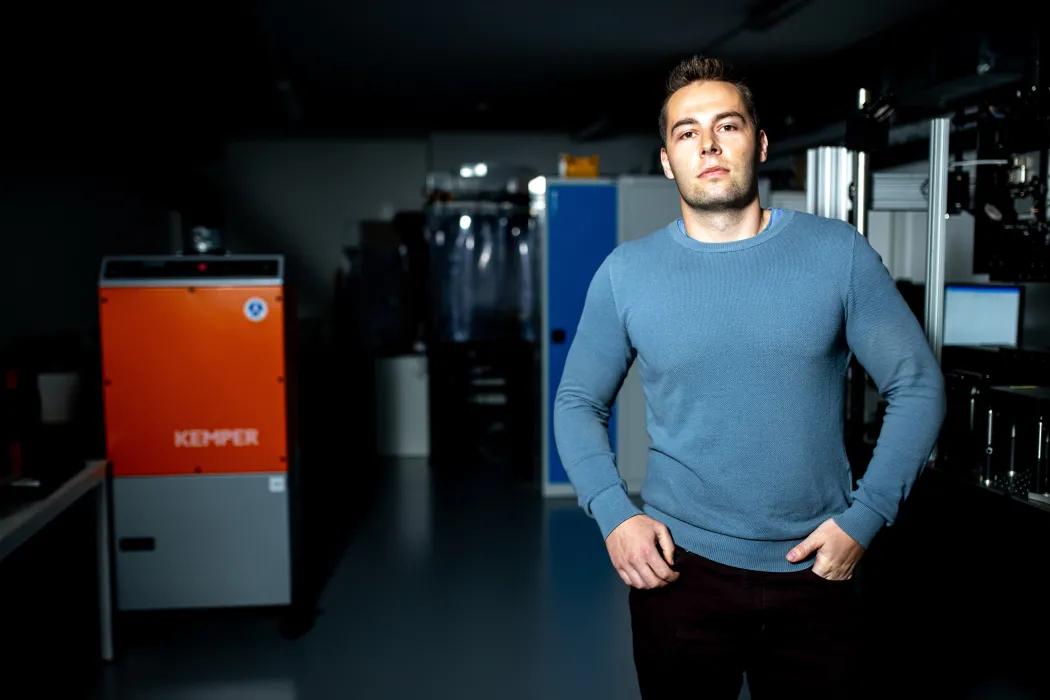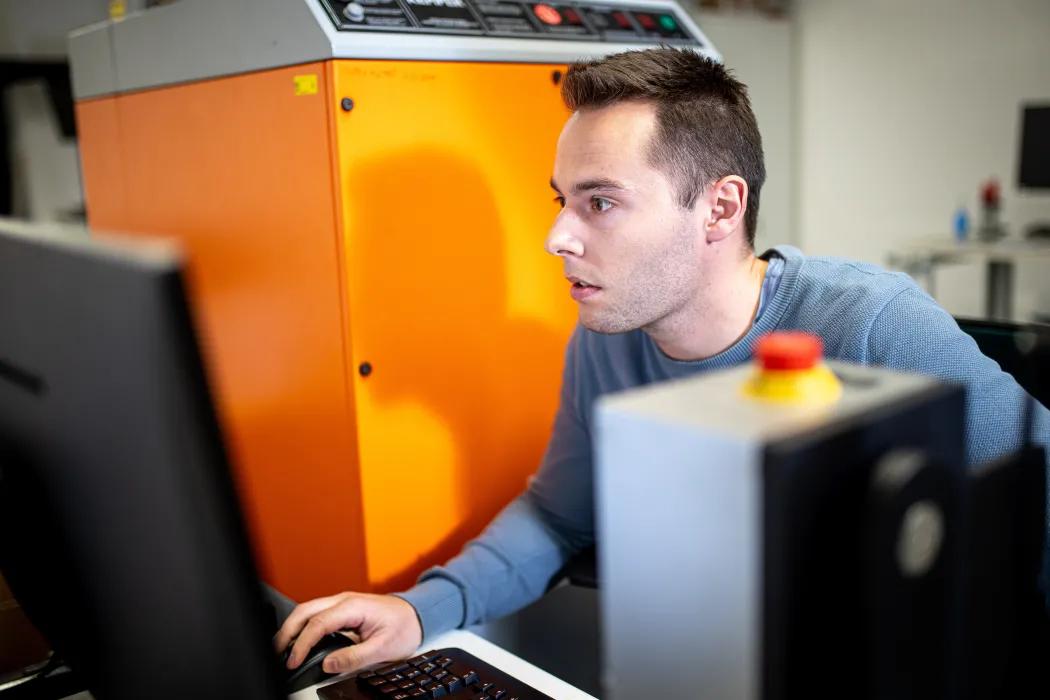The prize for best dissertation in the Werner von Siemens Award has been received by Petr Hauschwitz from HiLASE of the Institute of Physics of the Czech Academy of Sciences. His dissertation dealt with laser micromachining technology and was defended at the Faculty of Nuclear Sciences and Physical Engineering of the Czech Technical University in Prague. We talked to him about material surfaces and why he decided to get an MBA.
Why did you choose functional surfaces as your research topic?
First of all, it was my love to maths and physics – something I owe to my grandad. It was him who helped me discover how beautiful exact sciences are, and gave me a clear idea about what I want to do after I leave my secondary school – I decided to study the Faculty of Nuclear Sciences and Physical Engineering. There, my focus was on optics and lasers, and later, because of its huge application potential, I chose functional surface modification using laser as my dissertation topic. It was their huge application potential that fascinated me, whether it was for biotechnologies, engineering or even space industry.
In collaboration with Meopta and Crytur you have created new micromachining technologies to be used to manufacture OLEC or when milling scintillation crystals. What other applications might be introduced to production any time soon?
The applications that might come into play soon include methods such as texturing mold surfaces for plastic injection. This is something we have been working on together with the Technical University in Liberec – specifically, we develop a technology that would allow us to transfer functional surfaces from a laser-textured mold to a final plastic product. Such surface can then display increased adhesion, reduce friction etc. Simultaneously, we are working together with BIOCEV and University of Chemistry and Technology Prague to develop anti-bacterial surfaces and surfaces enhancing biocompatibility and cell growth to improve the state-of-the-art body implant surfaces, for example. In doing so, we expand our long-term vision of transferring our findings and know-how to Czech industry to improve competitiveness of Czech companies.
Where do you look for inspiration when improving surfaces?
Even in engineering, inspiration can be drawn from nature; we got inspired by the lotus leaf to create superhydrophobic surfaces, for example. It has a special micro and nano-structure that is water-repellent and self-cleaning. We applied a structure that resembled it on an aluminium alloy used in aircraft structures. However, we normally get inspired by research articles and subsequent experiments and computer simulations which take into consideration specific conditions of a given application and technological possibilities.
One of your research topics includes nitinol – an alloy which has a unique position in medicine for its outstanding physical properties.
Specifically, we work on developing Ni-Ti with an anti-bacterial surface that reduces friction. As such, it can be used for texturing stents in, for example, cardiology.
You said you are missing swiftness and efficiency in functional surface manufacturing. Do you know how to rectify these shortcomings?
They are a general problem when manufacturing functional surface structures with such a high level of detail. The question of how to rectify these shortcomings is one of the goals of my dissertation thesis, which received the Werner von Siemens Award. With multiple beam technologies we succeeded in pushing the speed of functional surfaces production forward by a few orders of magnitude and we have still been working on other technologies that can take us even further in this direction.
What made you choose to study for an MBA?
I need to be able to manage a team on a professional level. That’s something we didn’t learn at school. I think that every manager should collect know-how at least through self-study in this area, whether it’s in private or academic domains.
Your supervisor Tomáš Mocek appreciates your personal qualities such as reliability and independence. What do you appreciate about him?
I appreciate him mainly for giving young researchers an opportunity. He helped me stand out from the crowd. I didn’t have to become a yes man for a boss in some laboratory. Another important thing is he’s got a vision, and he can get others at HiLASE inspired to follow it. During our latest teambuilding session by HiLASE, a colleague remarked wittingly that Tomáš Mocek is the lighthouse.
Ing. Petr Hauschwitz, Ph.D. won the first prize for best dissertation in the Werner von Siemens Award. The thesis was named Large surface functionalization by laser-induced micro and nanostructures and was defended at the Faculty of Nuclear Sciences and Physical Engineering of Czech Technical University Prague. The author developed and put into practice a method of producing large periodic micro and nanostructures with laser. The new laser micromachining technology uses multiple-beam optics – or special laser beam division optics – enabling the parallelization of machining procedures, which significantly speeds up production. He applied to the Werner von Siemens Award at the instigation of his supervisor Tomáš Mocek.

